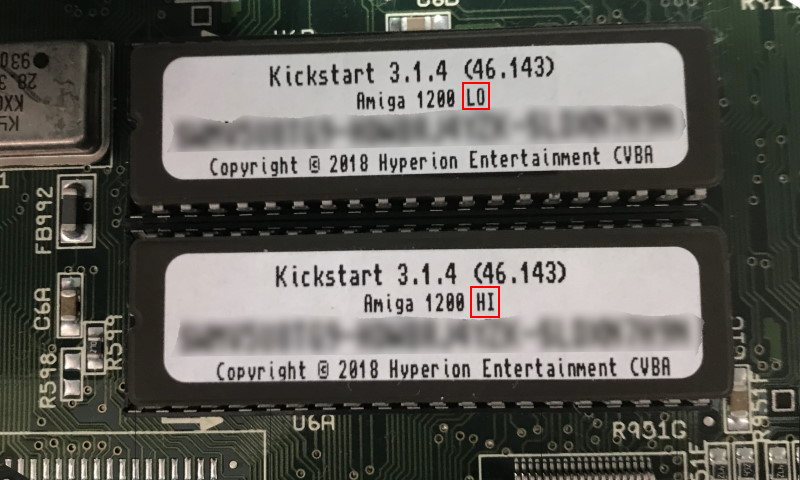
They’ll see the ADF as a floppy disk and mount it as if it were loaded on classic hardware.įor many years this type of solution has been possible on Amigas running 2.0+.

#Amiga workbench adf pack Pc#
It could also be read via emulation either on a modern PC or even a floppy drive emulator like the GoTek. That file can then be written to a fresh floppy or read by an emulator as if it were a physical floppy disk. If one wants to “share” a disk with a friend, all he needs to do is create an ADF version of that disk and send his buddy the digital file. The ADF file format is an image of an original floppy disk it is a track-by-track dump of a disk’s data as read by the Amiga operating system.
#Amiga workbench adf pack software#
One of the key ways people have shared Amiga software over the years is through the use of ADF files. And being a talented engineer, he’s decided to design and develop some very cool software specifically for OS 1.3. He likes to use the machine the way it was in the era in which he bought it. (Note: you can make the 1.3 User Interface totally gray if that makes you feel better.) And to that end, some folks are keen to still making 1.3 a dynamic and evolving user experience even today in 2021.Ĭhris Brenner, the Californian who reverse engineered the Microbotics StarDrive for the Amiga 1000 earlier this year, has been busy creating software to make his life easier when using his original Amiga. It doesn’t mean the core 1.3 experience wasn’t absolutely brilliant. It’s not that AmigaOS 1.3 couldn’t have provided everything the later versions did via Public Domain software enhancements, it was often more a matter of Commodore keeping up with design trends while trying to push AmigaOS as far into the future as possible to stay relevant and fresh when the company was still alive and trying to scratch out any marketshare they could. So most Devs made sure their games were backwards compatible to 1.3 up until the day Commodore died. In fact, even some early A3000’s shipped with it as well. All of these machines shipped with 1.3 at some stage. If a Game Dev wanted to hit the largest possible market, they’d want to include the millions of people around the world rocking A1000s, 2000s and in particular the most popular Amiga of all time - the A500. As such “Old Blue” was mainly left behind with one key exception: games. Since that time several Amiga Oses, either inspired by or built directly off of 3.1, have been created - the most recent being OS 3.2 in May of 2021!Įver since 1990 with the release of the Amiga 3000 and AmigaOS 2.0, the Amiga’s original OS was often forgotten by many developers, and understandably so for the times.ĪmigaOS 2.0 was created to be both more widely accepted by the mainstream public and easier to develop on for programmers. The last version of AmigaOS shipped by Commodore was version 3.1, which was delivered across various machines between 19. Thirty-five years after the release of the Amiga and over 27 years since Commodore went bankrupt and ceased operations, its devoted fanbase continues to support and innovate for the classic hardware. What an amazing time to be a part of the Amiga scene.


 0 kommentar(er)
0 kommentar(er)
